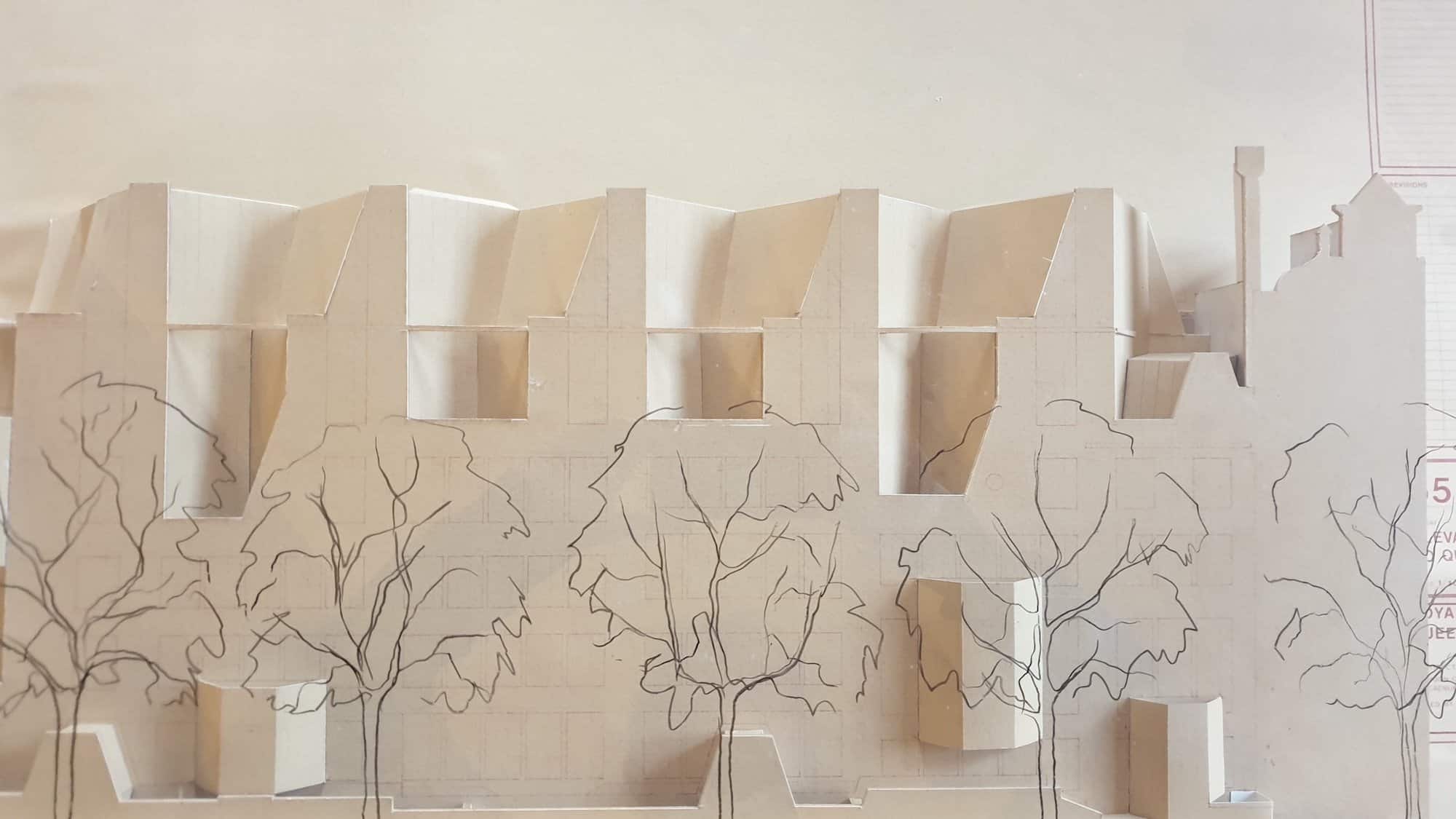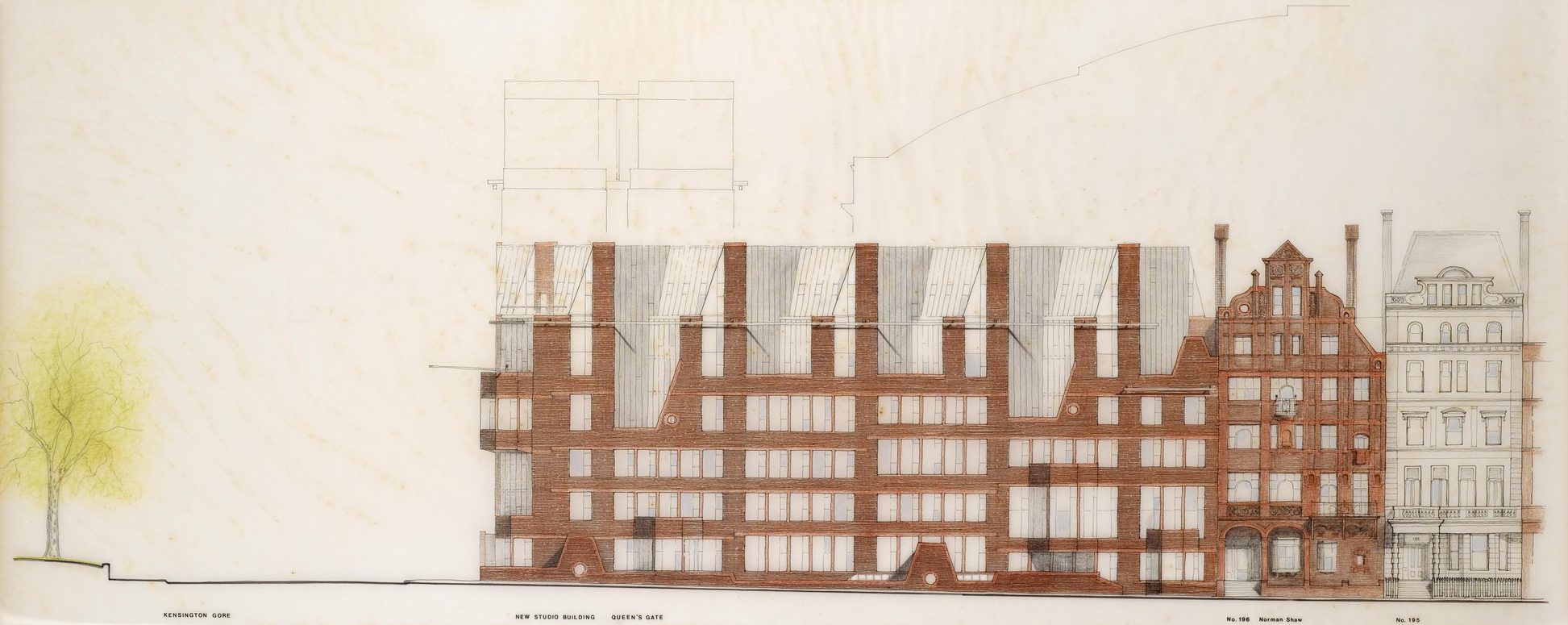Cadbury-Brown: Royal College of Art Extension

The counter-reformation did not last long. In the end I think what reconciled us was that everything I attempted failed. By way of diversion from internal dissension, like any politician, I switched to foreign affairs. There were two things which, as an architect, I was expected to achieve for the College. The first was an alliance or merger with, or if that failed the creation of, a School of Architecture, which has to be regarded as the central discipline in design education. Darwin had long ago taken the Bauhaus as his model and seen (as I did) our lack of one as a serious weakness. Since there were too many already it was silly to start a new one, so in the days when we had a lien on the long frontage in Queen’s Gate he had offered a section of it to the Architectural Association School, on the understanding that on arrival they would become a constituent College of our neighbour, the Imperial College of Science and Technology, and a link between that huge institution and ourselves. A competition for their new building, replacing four Victorian houses, had ensued with rather embarrassing results, compounded when the AA, after a spell of the violent altercation to which it was addicted, decided it was too democratic an institution to be able to live in the university system. Having thus rejected Government endowment, the school was now largely patronised by Americans who alone could afford its high fees. Even so it was in financial straits and its lease in Bedford Square was running out. So I approached Alvin Boyarsky, its Principal, with what I hoped would be a more attractive proposition – the use of our studios and other buildings at the back of the V&A when our new building made them surplus to requirements, plus whatever loose relationship with us would preserve their freedoms. It was necessary to be quite open about this if some plot was not to be suspected, which enabled the AA to reject us with a show of hauteur, as though it was we who were in difficulties. So that was the end of that. It had in any case depended on our indeed getting our Phase Two buildings in Queen’s Gate, to which the Government had been committed when Phase One, the great black block, had gone up alongside the Albert Hall.

Getting Phase Two out of the ground was my second task. On the site at present were some rather stodgy Victorian mansions, some yellow stucco, some red brick – a lot less elegant than the Regency terrace that had been blithely removed to make way for Phase One. But much had changed in the architectural world since 1960. Victorian South Kensington was now a Conservation Area and our Queen’s Gate frontage was ‘listed’, so we were in for a Public Enquiry. Hugh Casson and Jim Cadbury-Brown produced a rather mannered, red-brick design carefully composed to do honour to its equally mannered red-brick neighbours, and I asked Dick Sheppard to testify to its merits and Mark Girouard to testify to the mediocrity of the buildings it was to replace. They did so to such effect that the Inspector recommended in our favour. But Tony Crosland, moved I think not only by architectural populism but also by a dislike for the College’s pretensions he had acquired when Minister of Education, overruled him. So an interesting post-modern building was lost to London. We had to fall back on the much less convenient site in front of the V&A, long vacant since its early Victorian terraces had been demolished in the thirties to make way for Lutyens’ abortive National Theatre. But here we were up against market competition – front runner the Aga Khan with (to our embarrassment) Casson and Conder as his architects. Our scheme, by Cadbury-Brown, has to squeeze far more on to this costly site, and it was obvious that we could only win with some local government discromination in our favour. I went to work on the Tory GLC, claiming the national interest, but they opted predictably for the bigger money and (one can now see) the better building. This was not quite the end of the story. I discovered that the five identical, magnificently Piranesian warehouses of London Dock, just east of St.Katherine’s, were on the market. I was convinced that if the College could summon up the courage and the cash to pack up and go there it would not only be the ‘shake-up’ we needed in all sorts of senses but also an exciting contribution to the revival of the Docklands. I sold the idea to our Governing Council, but the staff and students, even their left-wing union, were dead against. They were the people who would have to live there, and they liked South Kensington a lot better. Soon after, as sometimes happened to listed buildings that are in the way of development, somebody put a match to them.
Excerpted from Our Selves Unknown: An Autobiography (1985)
